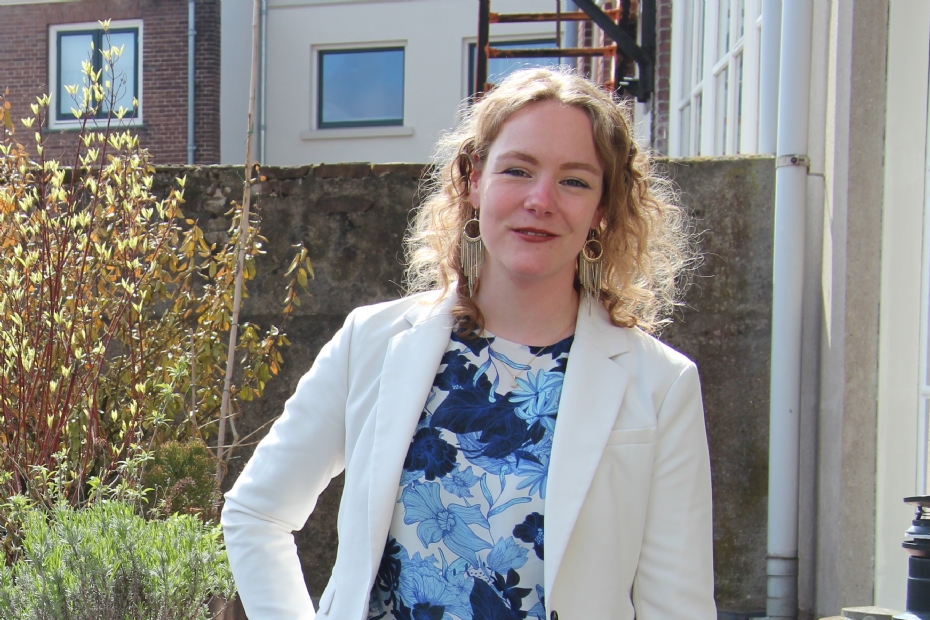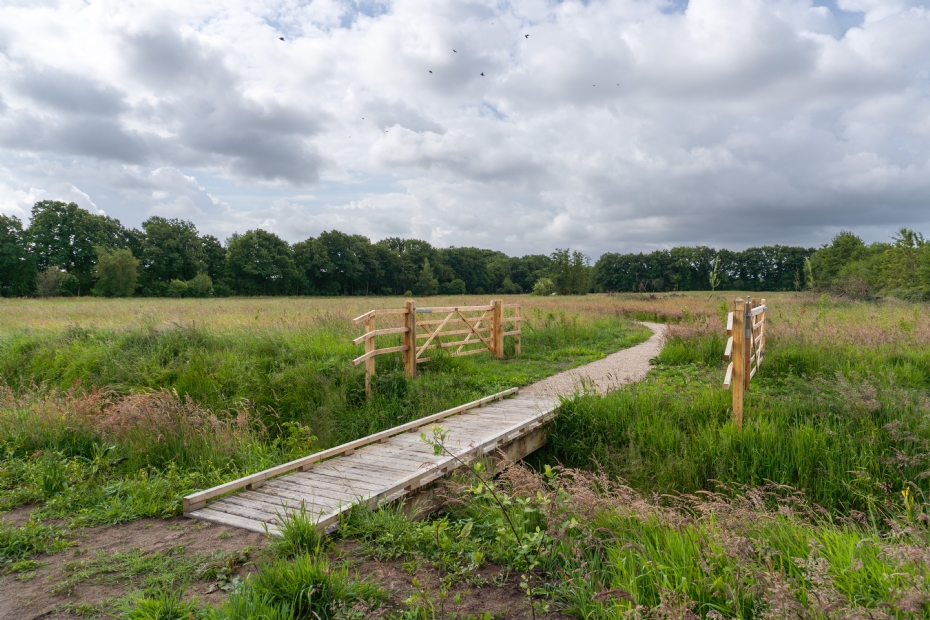The Melksteeg strengthens the green corridor around Amersfoort |
|
|
|
|
 |
| 160 sec |
Collaboration between designers and contractors delivers 20 hectares of robust nature
The Melksteeg project has created 20 hectares of new nature between Amersfoort and Soest. It strengthens the ecological connection between the Utrechtse Heuvelrug and the Eem and compensates for forest cleared for the widening of the A27. Daisy van Boven of SmitsRinsma guided design, construction and management, with a focus on biodiversity and future-proof nature management.
| Phase 1 - nature-friendly banks |
Van Boven came to the attention of trade magazine Stad + Groen when she completed the European Tree Technician (ETT) qualification in 2021. She was not only the youngest female graduate but also achieved the highest grades. The development of her career is reflected in the Melksteeg project. "I started as a technical drafter, then became a specification writer, later a supervisor and site manager, and now I am project leader."
SmitsRinsma also fulfils several roles. In collaboration with H+N+S landscape architects and Buiting Advies, the firm was involved in the design, preparation, tendering and construction supervision. "After six years of hard work, it's great to enjoy a beautiful piece of nature. I'm proud to have contributed." Before construction, archaeological research was carried out in the area. Finds from the Stone Age, late Neolithic and the Second World War were discovered. These locations were marked with flower-rich grassland mounds and information panels.
 | | Archive photo NWST of project leader Daisy van Boven |
|
|
|
|
Different planting densities should create a woodland with a mature appearance within fifteen years.
| |
|
Collaboration between Natuurpro partners
Van Boven explains that much native, regionally sourced planting material was used and that less common planting methods were applied. The material was purchased by the municipality of Amersfoort from Staatsbosbeheer's seed bank De Bronnen. "In the first two phases, we worked exclusively with partners from Natuurpro, a knowledge network of green professionals. Ecological consultancies, contractors and architects are part of this network.
H+N+S Landscape Architects defined the area's structure: 8 hectares of woodland, flower-rich grassland and hiking trails. Buiting Advies set out the planting design, after which SmitsRinsma stepped in. On our recommendation, the Koninklijke Ginkel Groep was directly awarded the contract for the northern section. HEEM supplied seed for flower-rich grassland with native species mixes, and management is carried out using sinus mowing, a method developed by the Butterfly Foundation. This increases variation and species richness. Due to the varied planting densities, a woodland with a mature look should develop within fifteen years, similar to the Bentwoud near Zoetermeer. The design requires little maintenance."
 | | The roughness of phase 1 is clearly visible here |
|
|
Key lessons
Phase 2 was prepared only after completion of phase 1 in 2023. "All lessons from the first phase were incorporated into the phase 2 specification. Phase 2 was completed in April this year." Van Boven explains: "In phase 1 we did not remove soil. We wanted to stimulate natural seed development but faced strong competition from disturbance weeds. These required extra mowing and removal. Therefore, in phase 2 one parcel was excavated. By removing the 60-centimetre nitrogen-rich top layer, the original seed bank emerged. In other areas, we kept the original grass vegetation and only created planting pits. That was an important lesson: the parcels in phase 1 that were tilled still don't match the desired result as well as the parcels in phase 2."
|
|
"We try to avoid patchwork management."
| |
|
Practical improvements also emerged. "Usually, drawings show which species go in which plots, and the planting list tells the contractor how many plants belong in each plot. Koninklijke Ginkel Groep asked us to include the quantities directly on the drawings, making the planting list largely unnecessary. It's a small detail, but it saves significant time during implementation."
 | | Phase 2 - bridge and fencing |
|
|
Management based on nature targets
Van Boven is now drafting the management contract for the Melksteeg. "This explains the consequences of what has been built, using nature target types. We have woodland, kilometres of natural banks and five types of grassland. Wet hay meadow, for example—the parcel that was excavated—and species-rich grassland. Each is managed according to its target type. The species-rich grassland is mown twice a year and 20 percent of the vegetation is left standing, also known as sinus management. The wet hay meadow is mown more often."
Management is as varied as the landscape. It requires specialist knowledge and different working methods. "We try to avoid patchwork management. Landscape elements such as dense hawthorn hedges provide variety and naturally guide visitors away from the species-rich grasslands."
|
|
The Melksteeg forms a green link between the Utrechtse Heuvelrug and the river Eem.
| |
|
 | | Phase 2 - drone images BEFORE and AFTER |
|
|
The original Melksteeg
The Melksteeg was an old path in Amersfoort that extended from the Middelhoefseweg to the Middelhoef farm. In summer, farmers from the higher Birkt used the Melksteeg to reach their cattle in the lower polder. After a boundary change with the municipality of Soest, the name Melksteeg was changed to A.P. Hilhorstweg.
|
This article was previously published on 17 November 2025 on the Stad + Groen website.
| H+N+S Landschapsarchitect... | |
| |
| LOG IN
with your email address to respond.
|
|
|
| There are no comments yet. |
|
| |
Anyone can place small ads for free through their own account.
Place a free ad
|
|
|
|